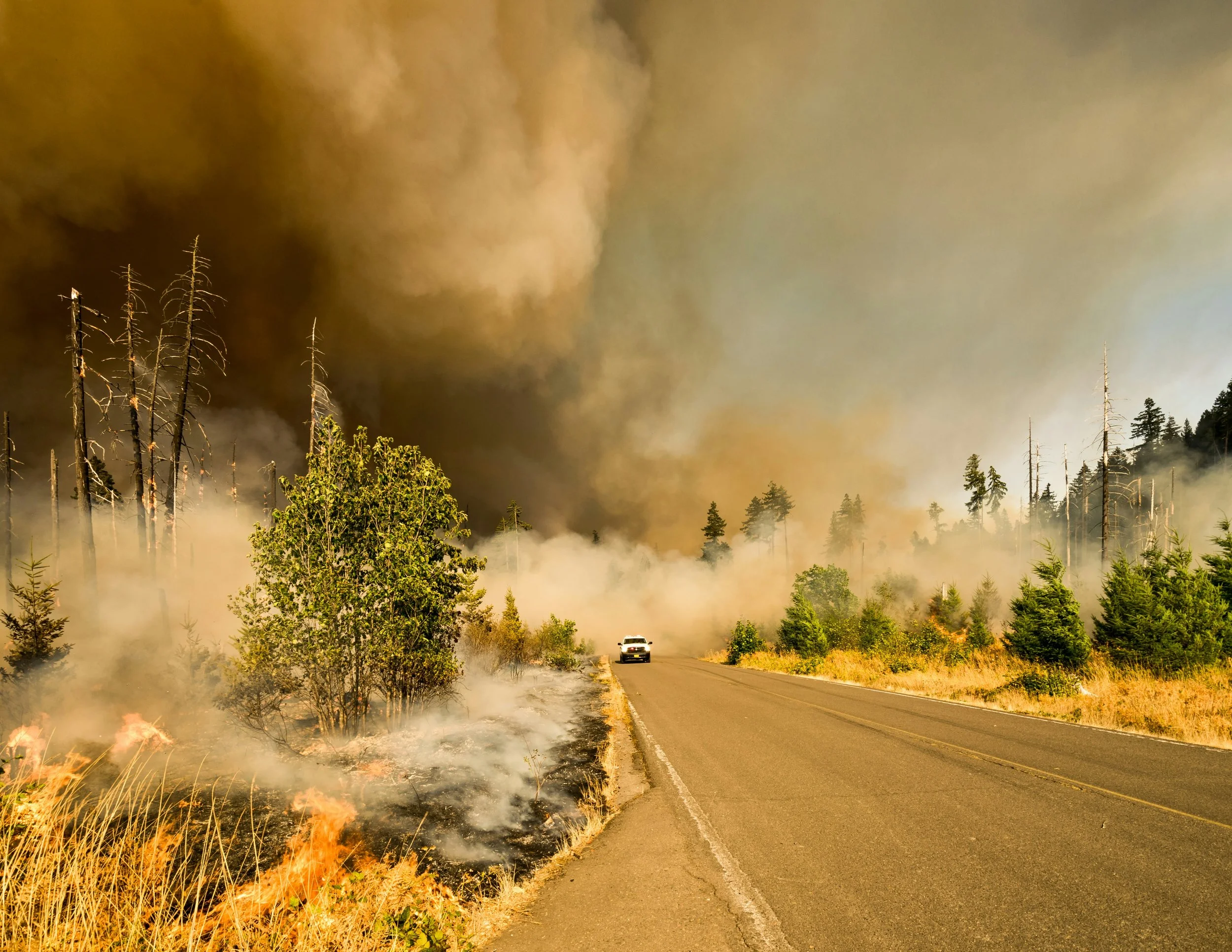What you can do:
Advanced steps
2.1 Learn how bushfires behave
Photo by Marcus Kauffman on Unsplash
Bushfires can evolve and spread quickly. They are influenced by weather (notably heat, strong winds, and low relative humidity), fuel (e.g. dry vegetation), and topography (they move faster uphill).
Flame contact, radiant heat, and embers are all dangerous. Radiant heat is the biggest killer in bushfires, while embers can travel many kilometres ahead of the main fire front, starting new fires (these are the main reason why houses burn down).
Fortunately, there is a lot we can do to reduce our risk. Watch this video on embers and explore the CFS website to learn more on bushfire behaviour.
Knowing how bushfires behave is a good foundation to go further, and to prepare your bushfire survival plan.
2.2 Create a good bushfire survival plan
A bushfire survival plan is a list of actions you and your loved ones will take. Like a checklist that pilots use for all types of scenarios, it helps you to work through challenges as calmly and as quickly as possible.
People living in bushfire risk areas need to think about, talk about, and make decisions about what they are going to do at different times:
There are six criteria of a good bushfire survival plan:
To develop your plan, there are many useful resources:
SA Country Fire Service
The CFS brochure ‘Your Guide to Bushfire Safety’ includes a template for a Bushfire Survival Plan, which includes sections for Leaving Early as well as Stay & Defend.
Furthermore, the CFS has online “5 minute plan” as well as a more detailed 11-page Word document that can be printed and completed. They are available here.
Additional resources:
Making a Bushfire Survival Plan? Involve your kids! (Bushfire CRC)
Pets in Emergencies (RSPCA)
The Australian Red Cross has a template for general emergency preparedness (the RediPlan) and the Get Prepared app.
2.3 Take simple precautions
There are many possible actions to reduce risk. These include:
Removing vegetation directly around my home
Keeping fine fuels at a minimum
Cleaning gutters from any debris (leaves, twigs)
Many actions can be done quickly and at low or no cost.
Through the FirewiseAssist home inspections, we will identify weak points and include actions that are specific to your personal circumstances. To know more, read more about our services and get in touch with us.
2.4 Have emergency kits in place
Where are my car keys? We know such situations from everyday life (and usually, the car keys re-appear). Still, not being able to find a valuable item that you need can be quite stressful, right?
Emergencies such as bushfires are stressful in the best of circumstances — so we should be ready to act as quickly and calmly as possible. Making sure that we have everything we may need where and when we need it a critical part of our preparations. This is where emergency kits come in.
What is in these kits depends on your needs, your plans, and your circumstances (kids? pets?). You therefore need to put some thought into packing your kits — much like you do before going on a trip.
You should ask yourself: what will I need, then put things into the right place. We recommend to have at least four kits:
Kit A: General emergency kit: a kit that contains important documents (or at least digital copies, First Aid items and medicines, phone and powerbank, battery-operated radio, torch, and whistle. Don’t over-pack, and keep this kit accessible (by the door) and with you when you go out. A rucksack is a handy choice.
Kit B: Car emergency kit: in each car, keep a kit in case you get caught on the road (this should be avoided if possible, but you never know). Include woollen blankets, drinking water, a face mask, boots, leather gloves, and goggles.
Kit C: Home defence kit: even if you choose to leave early on a fire danger day, you may be taken by an emerging fire by surprise — and be in a situation when it is no longer safe to leave. Have protective clothing, face masks, boots, goggles, leather gloves, as well as spare hoses, mobs and buckets at a minimum. Keep this kit easily accessible in your home.
Kit D: Relocation kit: this is the kit you will take when relocating. Think of items you may need on a long weekend trip. Have this pre-packed and add items the day before you leave. Assume that you will be 72 hours away and include valued and irreplaceable items.
Some general guidance on emergency kits is available at the CFS website.




